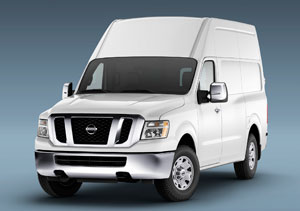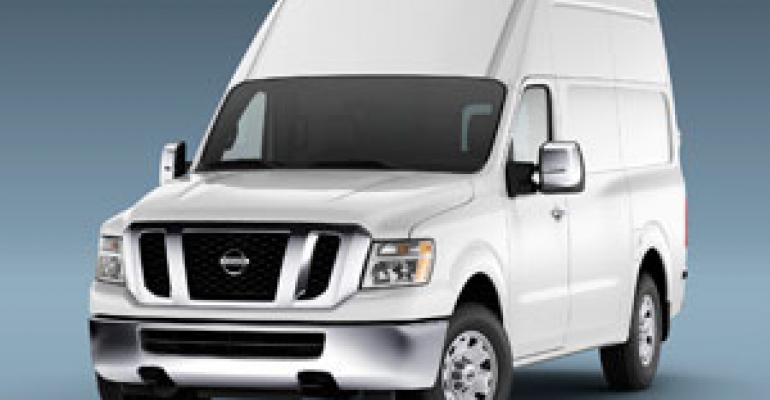
CANTON, MS – It began like a pep rally, with canned music building to a crescendo as the big moment arrived: the roll-off of Nissan North America’s all-new commercial van, the NV.
The event in Canton, 23 miles (37 km) north of Jackson, the state capital, marked Nissan’s $118 million investment in the 8-year-old plant, raising the Japanese auto maker’s investment to $2.1 billion in Mississippi and more than $5 billion throughout the South, including vehicle and engine plants in Central Tennessee.

Nissan, the first foreign auto maker to set up shop in the South nearly 30 years ago with a Datsun truck plant in Smyrna, TN, is now joined by BMW in South Carolina, Kia Motors in Georgia, Mercedes-Benz, Honda Motor and Hyundai Motor in Alabama, Toyota Motor in Kentucky and Texas, and Volkswagen in Tennessee.
Cumulative investment in the region – including half a dozen powertrain plants and yet another $1.4 billion by Nissan, this time at its Smryna plant to produce the Leaf and other models – approaches $30 billion while vehicle capacity has risen to more than 3 million units, one-fourth of the U.S. total, and is growing.
Related document: Foreign Transplant Operations in Southern U.S.
Nissan became the first foreign auto maker to set up shop in the South when it opened a Datsun truck plant in Smyrna, TN, nearly 30 years ago. The auto maker since has been joined by BMW in South Carolina; Kia in Georgia; Mercedes-Benz, Honda and Hyundai in Alabama; Toyota in Kentucky and Texas; and Volkswagen in Tennessee.
Cumulative investment in the region – including half a dozen powertrain plants and yet another $1.4 billion by Nissan, this time at its Smyrna plant to produce the Leaf and other models – approaches $30 billion (link to Excel chart: Foreign Transplant Operations in Southern U.S.). Vehicle capacity has risen to more than 3 million units, one-fourth of the U.S. total.
And it’s growing.
Toyota is scheduled to open a Corolla plant by late November in Blue Springs, MS, with analysts expecting Prius hybrid production to be added as early as 2013. Mercedes announced in June it would invest another $2 billion in its Tuscaloosa, AL, factory, raising overall investment in the facility to $3.4 billion, to expand M-Class capacity and add the new C-Class in 2014. Hyundai says it will spend $173 million to double capacity at its Montgomery, AL, engine plant.
The expanding model mix now features everything from compact sedans and CUVs, to passenger vans, SUVs and trucks for sale in both the mass and luxury markets. Included: Optimas and Sonatas, Passats and Quests, Odysseys and R-Classes, Sorentos and X3s, Ridgelines and Titans.
Meanwhile, analysts report that all the auto makers’ Southern operations now are profitable, following recovery from the recession of 2008 and not counting downtime for Japanese brands caused by supply-chain problems after the March 11 earthquake and tsunami in Japan.
And all are paying dividends in jobs and tax dollars to their host states, as former textile-producing and farming areas are transformed into automotive centers.
Whit Hughes, deputy director of the Mississippi Development Authority, estimates that when Toyota’s Blue Springs plant comes on stream this autumn and Nissan adds the Frontier pickup and Xterra SUV to its Canton lineup in 2012, the two auto makers will provide more than 5,000 direct jobs, plus more with suppliers.
And while the state hasn’t done an economic impact analysis, sources privately estimate the plants generate more than $1 billion annually, including direct and indirect employment and related spending.
“These two valued corporate citizens and their suppliers have had a tremendous impact. Not only have they created thousands of jobs and made substantial investments in Mississippi, but they have made the state a strong player in the Southern automotive corridor,” says Hughes.
Nissan is Mississippi’s second-largest employer. The impact has been even greater in Alabama, the first state in the Deep South to land a foreign auto maker when Mercedes-Benz arrived in 1997.
Steve Sewell, executive vice president of the nonprofit Economic Development Partnership of Alabama, credits that state’s three big auto plants – Mercedes, Honda and Hyundai – with creating more than 100,000 jobs, both direct and indirect, including supplier, trucking and warehousing, and operations.
“They have boosted our economy and raised the state’s image and credibility as a world-class manufacturing center, and not only for cars,” he says.
The supply-chain situation is less clear. Nissan and Kia have set up module shops with key suppliers inside their plant sites. Honda, Toyota and, to a lesser extent, Nissan rely heavily on their supply bases in Kentucky, Tennessee and the industrial Midwest.
All manufacturers have brought key suppliers from their home markets, including big names such as Hyundai Mobis, Bosch and Toyota Boshoku.
Honda and Hyundai build engines at their Alabama plants, while Honda and Hyundai subsidiaries, Honda Transmission Mfg. of America and Powertech America, produce automatic transmissions in Georgia. Powertech’s plant is located inside the 2,260-acre (915-ha) West Point site of Kia Motors Mfg. Georgia.
Mercedes, BMW and Volkswagen source engines and transmissions from Germany, VW importing and assembling key components at its newly opened plant in Chattanooga, TN. Nissan’s Canton plant brings in V-6 engines from Decherd, TN, 400 miles (644 km) to the north; continuous variable transmissions from JATCO Mexico in Aguascalientes; and automatic and manual transmissions from Japan.
An estimated two-thirds of Honda Mfg. of Alabama suppliers are located in a corridor from Ohio to Alliston, ON, Canada, where the auto maker formerly produced the Ridgeline and Pilot, now both built in Lincoln, 40 (64 km) miles east of Birmingham, Alabama’s largest city.
Chuck Ernst, Honda Alabama senior vice president, explains that Honda suppliers “had to determine for themselves if it was economically beneficial to transfer to Alabama.”
He says that because all three models currently produced in Lincoln were transferred from other Honda plants – the Odyssey from Marysville, OH, and the Pilot and Ridgeline from Alliston – suppliers moving to Alabama effectively would have to start over with new plants and workers.
For foreign auto makers seeking to establish a foothold in North America, the South offers an excellent transportation infrastructure with ready access to interstate highways and several major rail hubs, including Memphis, TN, and extending south and east to Jackson, MS, and Atlanta.
However, analysts believe the biggest attractions are the South’s anti-union culture (all states in the region have “right-to-work” laws that make it difficult for the United Auto Workers to organize) and hefty financial incentives.
“They’ve bought themselves an auto industry and paid quite a bit for it,” says Philip Mattera, research director at Good Jobs First, which tracks state subsidies.
Alabama, Mississippi and Georgia together have provided nearly $2 billion in subsidies and incentives to attract six big manufacturers – or seven, counting Toyota’s Huntsville, AL, engine plant.
Nissan received upwards of $350 million to locate in Canton. Toyota so far has gotten $290 million from the state and another $60 million from Lee County and other local governments. Mercedes-Benz, Honda, Hyundai and Kia each received some $250 million. The newest arrival, Volkswagen, reportedly got $410 million to go to Chattanooga.
The union issue is more complicated because most transplant auto makers offer competitive wage-and-benefit packages. In fact, hourly wages average more than $20 after several years on the job and are double the region’s median wages.
To UAW President Bob King, “union avoidance has been the motivation of many foreign auto makers from the beginning.”
However, Toyota, Nissan and Honda, Japan’s Big Three auto makers, did not lay off any workers despite a series of unexpected problems dating back to $4/gallon gas prices in spring 2008, which brought their truck operations to a virtual halt in San Antonio, Canton and Lincoln, respectively. Nor did layoffs result from parts shortages caused by the March 11 earthquake, which led to several months of production cutbacks.
Barbara McDaniel, government and external affairs manager at Toyota North America in Erlanger, KY, says wages at Toyota’s Mississippi plant start at $15 per hour and grow to $21 per hour in five years. Toyota also pays more than one-third of base salary for health-care and other benefits.
The average hourly wage at Hyundai in Alabama is about $22. The same holds for Honda in Alabama, where wages have grown to $24.50 and are on a par with Honda’s Ohio plants.
Some argue that more important than wages and benefits, and even control over work rules, are political considerations associated with the union. Toyota, for instance, proved for nearly a quarter-century that it could build quality cars working with the UAW at New United Motors Manufacturing in Fremont, CA.
Still, Kristen Dziczek, director of the labor and industry group at the Center for Automotive Research, warns that foreign auto makers “have real concerns about whether the Michigan congressional delegation, for instance, will side with them or with domestic manufacturers on political issues that relate to the industry.
“If you are in a state where you are the biggest and only manufacturer, you can count on the entire legislative delegation to be behind you,” she says.





